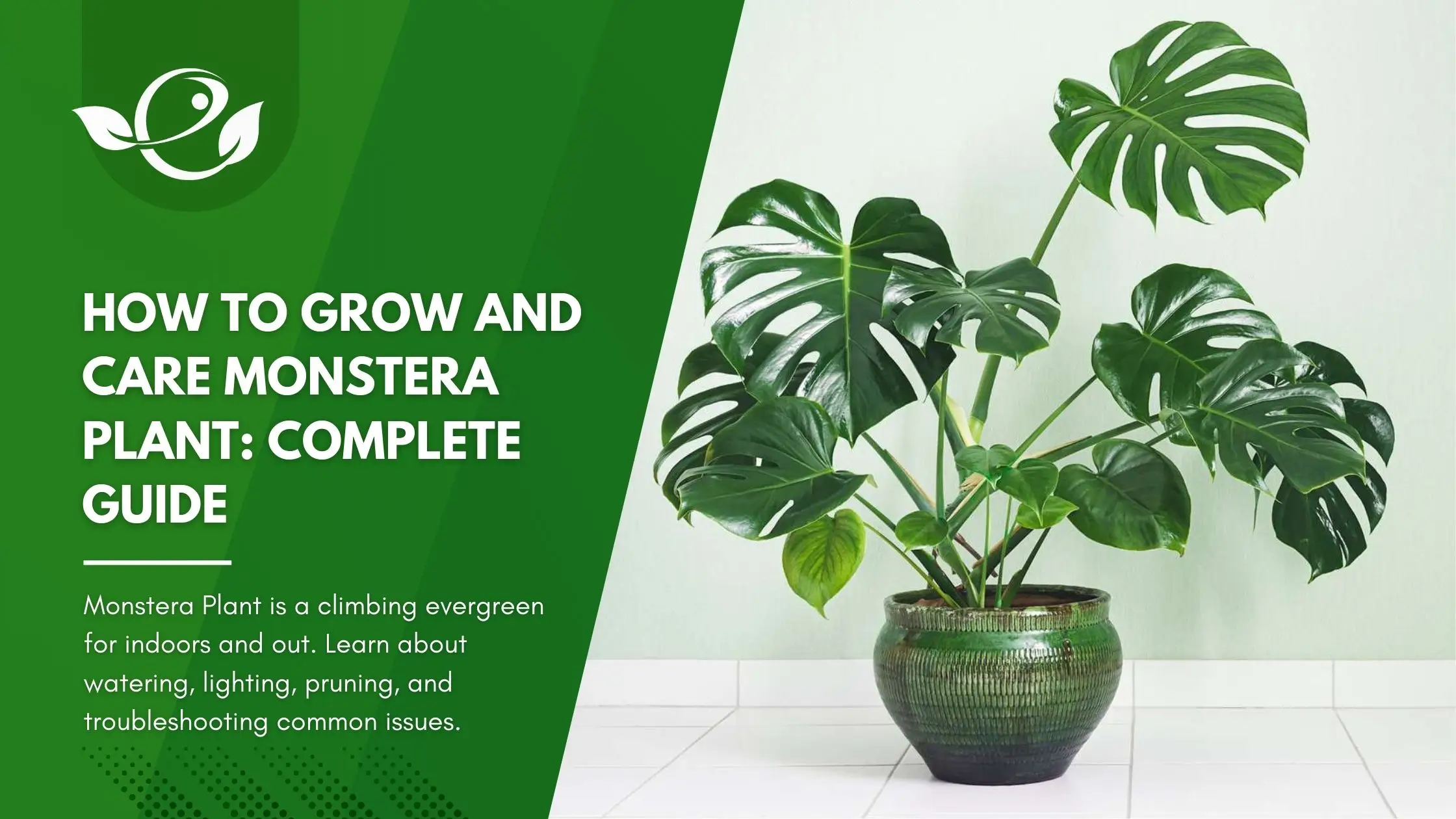Table of Contents
Monstera plants have become a staple in modern interior design, celebrated for their dramatic foliage and effortless charm. Their popularity is no accident: with the right care, a Monstera Plant can transform any space into a mini tropical retreat. In this comprehensive guide, you’ll learn how to select, nurture, and display your Monstera to ensure it grows healthy and vibrant. From understanding its natural origins to mastering propagation techniques, every detail you need to know is right here.
Understanding the Monstera Plant
What is a Monstera Plant?
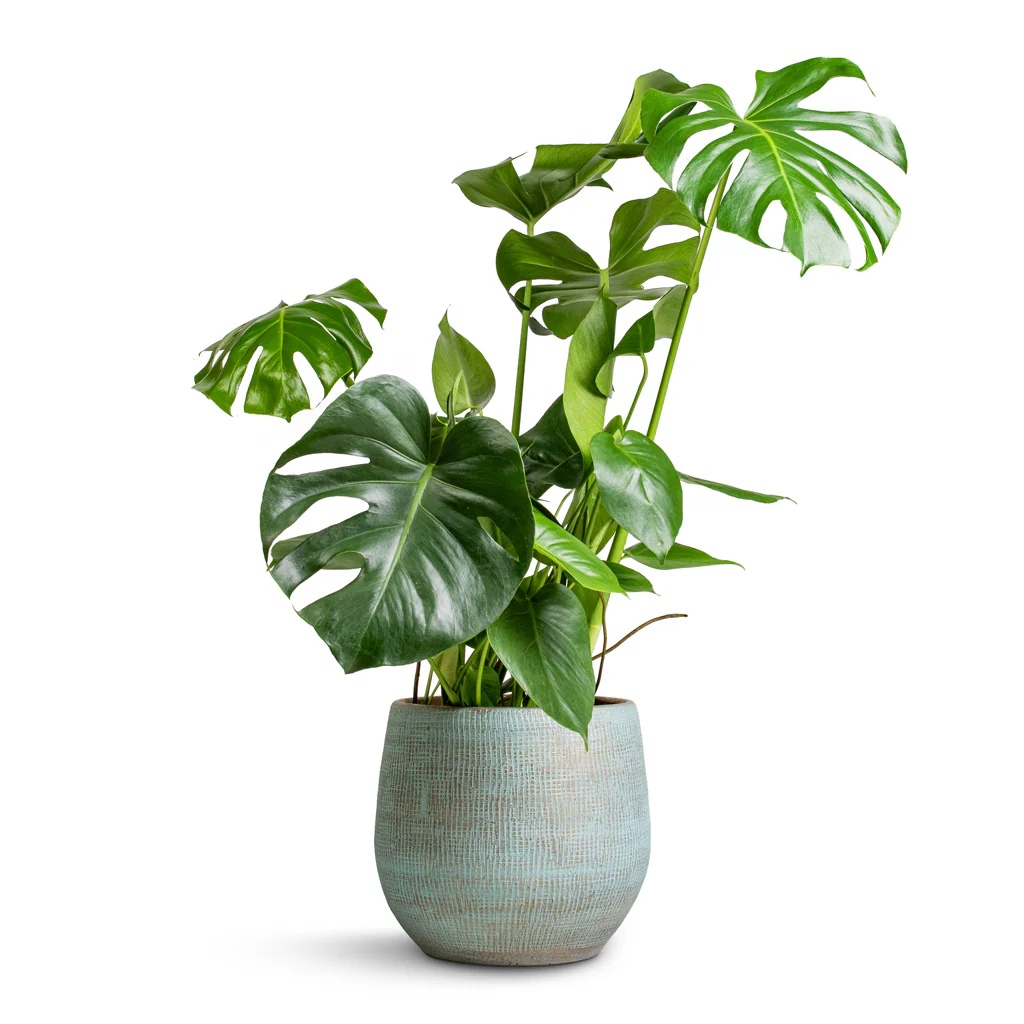
The Monstera Plant, often known as the Swiss cheese plant due to its distinctive perforated leaves, originates from tropical regions of Central and South America. This plant’s large, glossy leaves not only serve as an attractive focal point but also play a role in regulating its natural habitat’s moisture and light levels. In your home, the Monstera adds a unique blend of elegance and practicality, acting as both a decorative element and a natural air purifier.
Key Details
| Characteristic | Details |
|---|---|
| Common Name | Swiss Cheese Plant, Monstera |
| Botanical Name | Monstera deliciosa |
| Plant Type | Perennial Evergreen Vine |
| Hardiness Zones | USDA Zones 10-12 (ideal for tropical/subtropical climates) |
| Light Requirements | Bright, Indirect Sunlight |
| Watering Needs | Moderate; water when the top inch of soil is dry |
| Growth Habit | Climber; develops aerial roots to support its upward growth |
| Soil Preference | Well-draining, rich in organic matter |
| Origin | Native to tropical regions of Central and South America |
| Toxicity | Toxic to humans, cats, and dogs |
Benefits of Growing Monstera Plant
- Air Purification: The Monstera Plant acts as a natural air filter, helping to remove pollutants and improve indoor air quality.
- Aesthetic Appeal: With its large, sculptural leaves and distinctive splits, it adds a touch of tropical elegance and modern style to any room.
- Low Maintenance: Ideal for both seasoned plant enthusiasts and beginners, the Monstera thrives in bright, indirect light and requires minimal watering, making it an easy-care option.
- Stress Reduction: Studies have shown that incorporating greenery like the Monstera into your living space can help lower stress levels and boost overall well-being.
- Versatile Decor: Its climbing nature and adaptable size allow you to use it in various settings—whether as a standalone centerpiece, part of a mixed arrangement, or even as a statement piece in a corner.
- Improved Humidity: Through natural transpiration, the Monstera can enhance indoor humidity levels, which benefits both your skin and other plants in your home.
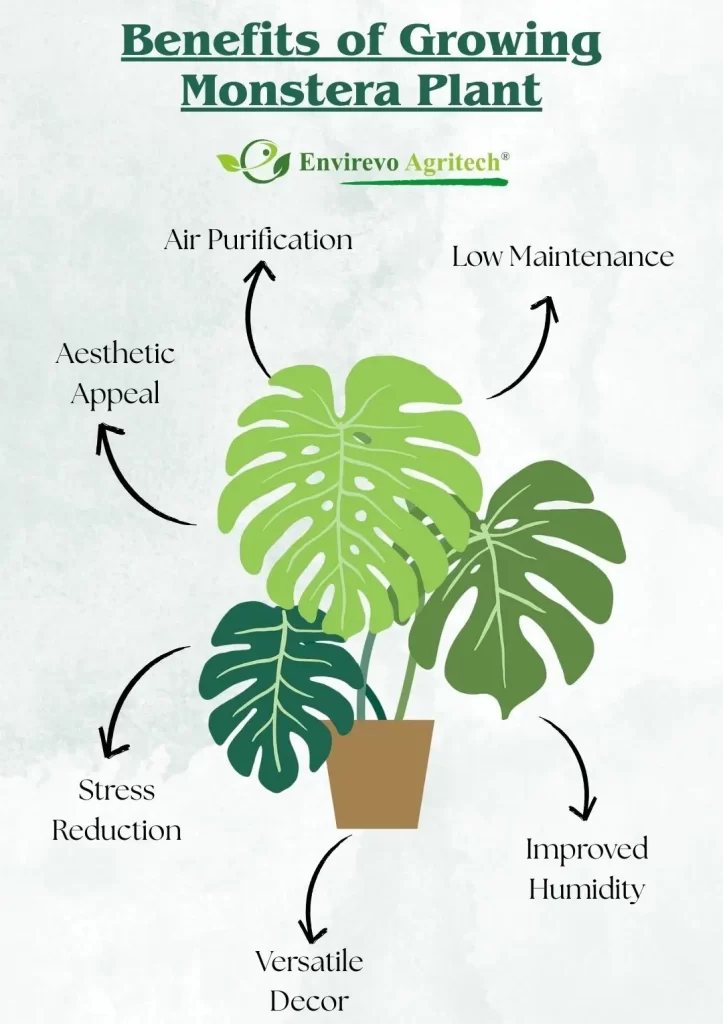
Popular Monstera Plant Varieties
Monstera deliciosa
Often referred to as the classic Swiss Cheese Plant, Monstera deliciosa is celebrated for its large, glossy leaves with natural perforations that develop as the plant matures. Big, heart-shaped leaves that gradually transform from solid green to having unique splits and holes. It is a climbing vine that develops aerial roots and is adaptable to both indoor and outdoor settings in warm climates.
Monstera adansonii
Known as the “Swiss Cheese Vine,” Monstera adansonii features a more delicate leaf structure with numerous smaller, irregular holes. Slender, elongated leaves with multiple fenestrations that give it a lacy appearance. This variety tends to have a trailing, vine-like structure making it ideal for hanging baskets or training on trellises.
Monstera obliqua
One of the rarer and more sought-after species, Monstera obliqua, is famous among collectors for its extremely delicate leaves. Thin, almost paper-like leaves with pronounced holes; some specimens may have more perforations than leaf tissue, making them appear very sparse and ethereal. Typically grows as a vine; however, its sensitivity and rarity mean it’s usually reserved for experienced plant enthusiasts.
Variegated Varieties (e.g., Monstera deliciosa ‘Thai Constellation’)
Variegated versions of Monstera deliciosa, like the renowned Monstera deliciosa ‘Thai Constellation’, are prized for their striking splashes of creamy-white or yellow patterns across the leaves. Leaves display unique variegation patterns, making each plant a one-of-a-kind piece of living art. Similar to the standard Monstera deliciosa in terms of size and climbing tendencies, but with a more delicate variegated pattern that might reduce overall photosynthetic efficiency.
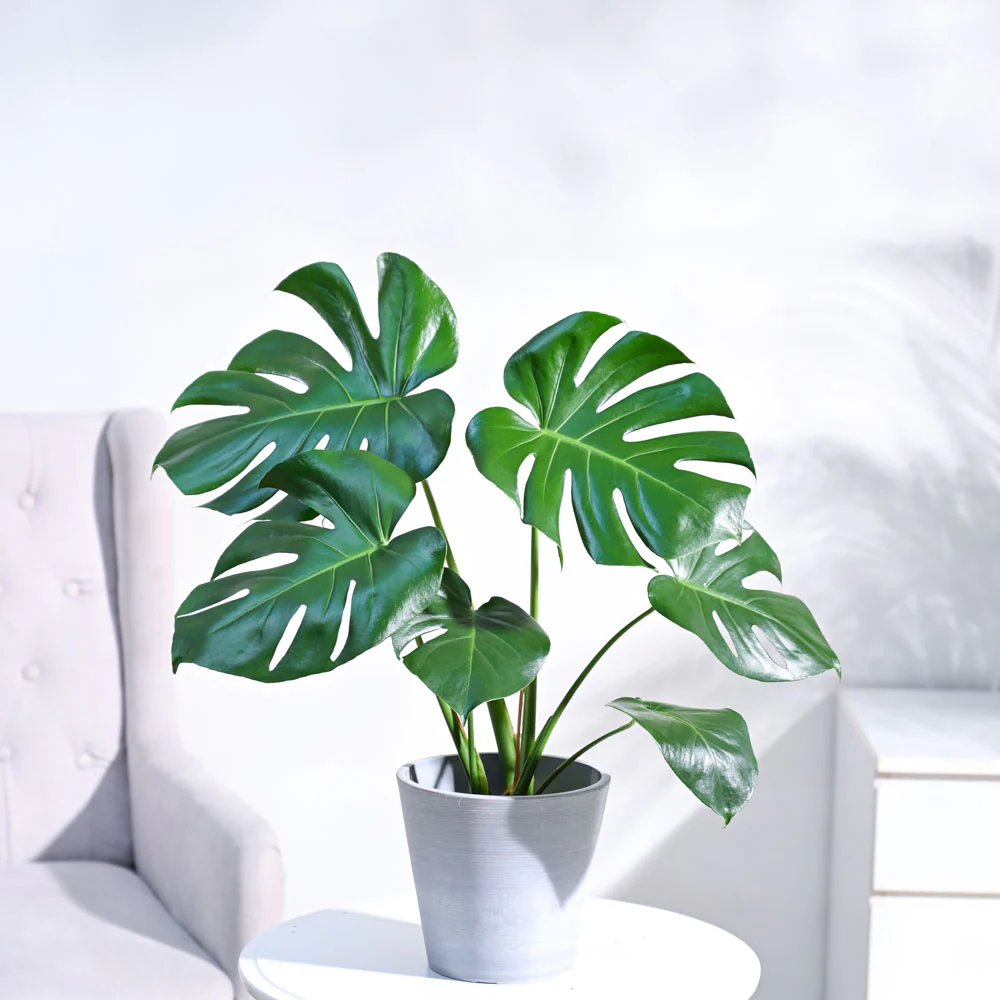
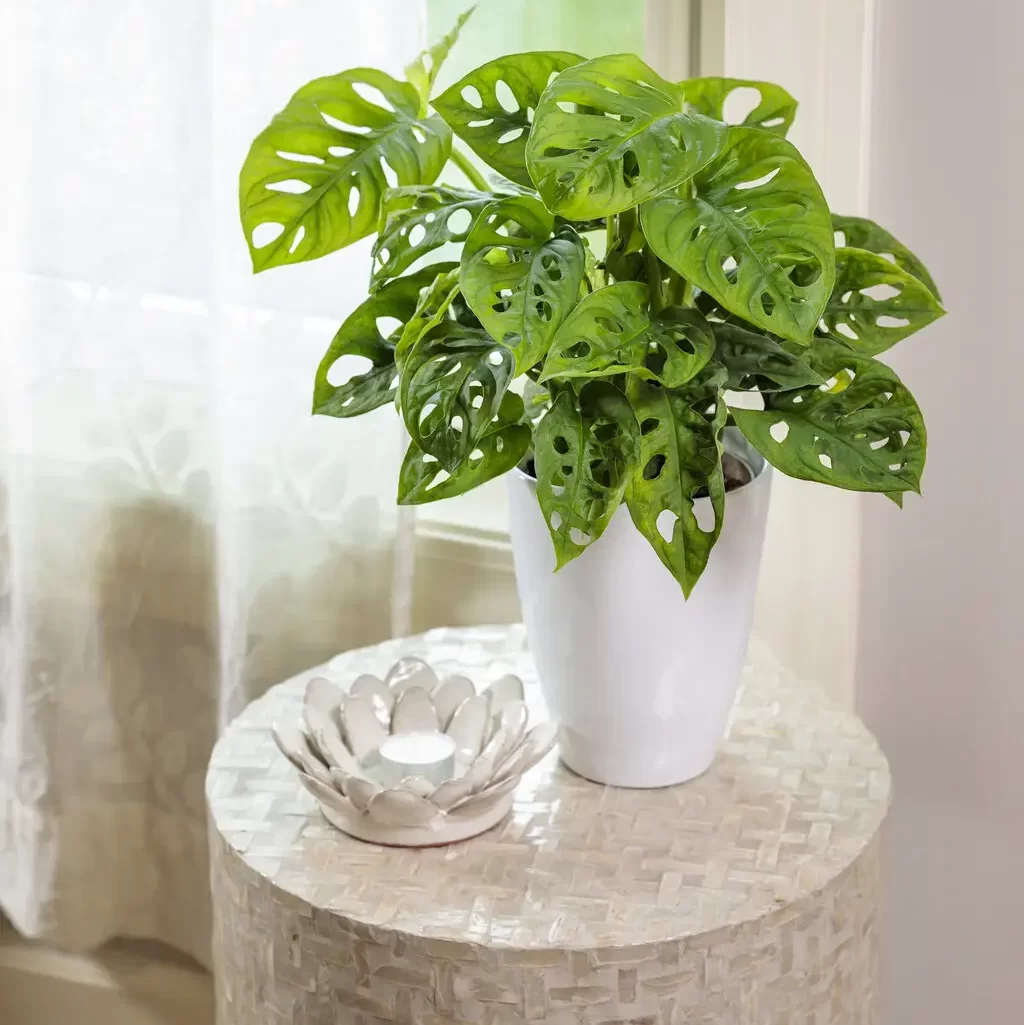
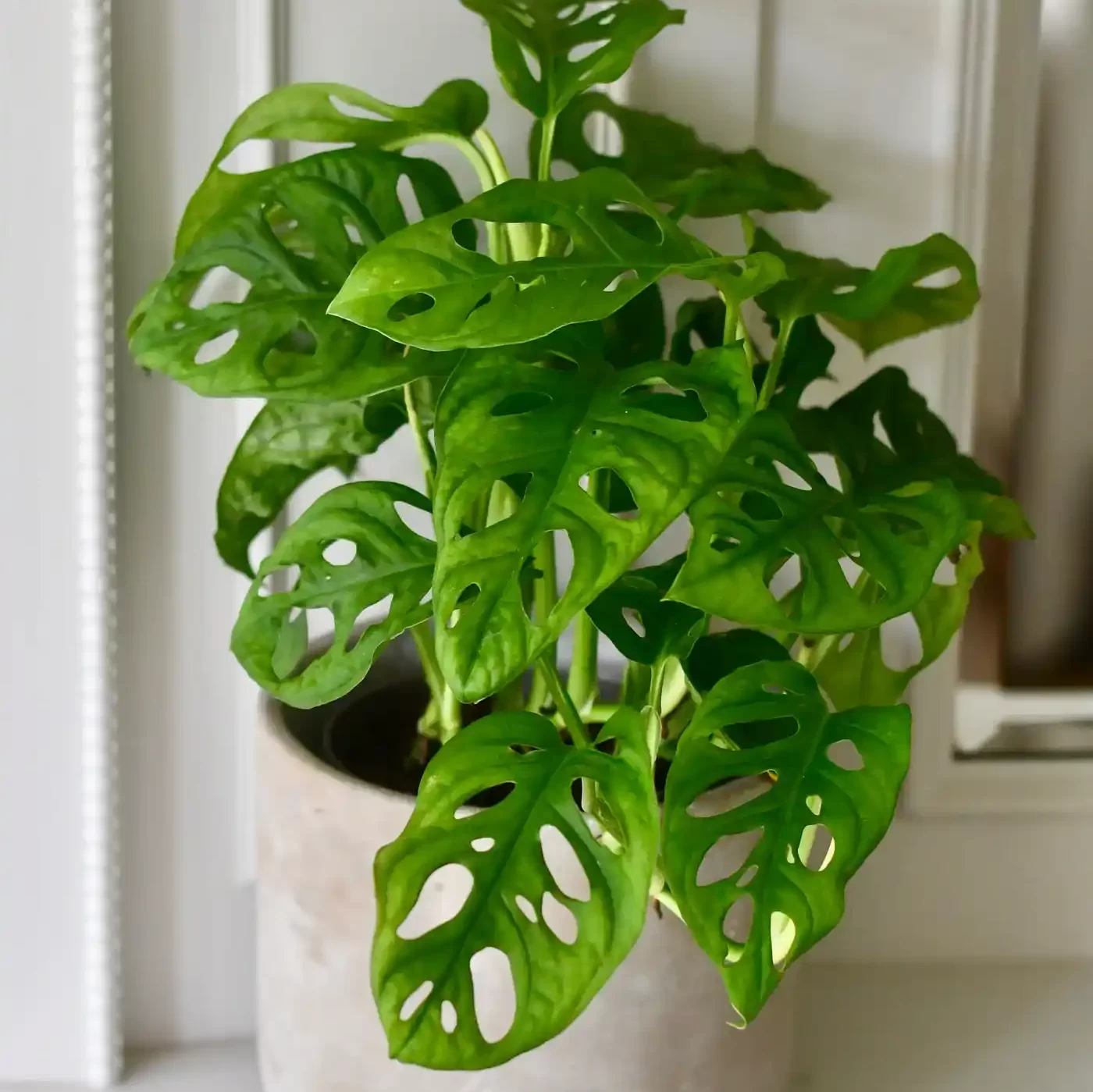
Tip: Before making a purchase, inspect the plant for vibrant, deep green leaves free from yellow spots or blemishes. Look for robust stems and a well-structured growth pattern, which signal that the plant is receiving proper nutrition and care. When searching for a Monstera Plant for your home, prioritize specimens with a balanced structure that will easily adapt to indoor conditions.
How to Care For a Monstera Plant
Lighting: Bright, Indirect Sunlight
Monstera plants thrive in locations with bright, indirect sunlight. Direct sun can scorch their leaves, so place your plant near a window where light is filtered through curtains or blinds. North or east-facing windows typically provide the best conditions, ensuring the plant receives enough light without the harsh midday rays.
Temperature and Humidity
These tropical plants prefer temperatures between 65°F and 85°F. Avoid sudden temperature fluctuations and strive to maintain a consistent environment. In drier climates or during winter months, consider using a humidifier or placing a water tray nearby to create a mini tropical microclimate. This extra moisture helps the Monstera Plant thrive even when indoor heating can dry out the air.
Ideal Room Placement
For optimal growth, choose a room that offers stable conditions and plenty of space for your plant’s roots to spread. Living rooms, sunrooms, and even home offices can be ideal spots. Consider the plant’s mature size when selecting a location to ensure that it has ample room to grow without becoming cramped.
Selecting the Right Soil Mix
Use a well-draining potting mix that retains moisture without becoming waterlogged. A blend that incorporates peat moss, perlite, and orchid bark is ideal for the Monstera Plant. This mix ensures that water flows freely, while still providing the nutrients needed for sustained growth.
Choosing an Appropriate Pot
The best pot for your Monstera should include drainage holes to prevent root rot and be slightly larger than the current root ball. Consider materials like terracotta or ceramic that promote slow drying of the soil—a beneficial factor in preventing overwatering issues.
Establishing a Watering Routine
Striking the right balance between too much and too little water is crucial for your Monstera Plant. Water thoroughly when the top inch of soil feels dry to the touch, ensuring that excess water drains out of the pot. During the growing season in spring and summer, monitor the plant weekly and adjust as needed based on temperature and humidity fluctuations.
Fertilization: Boosting Growth
A balanced, water-soluble fertilizer is ideal. To fertilize a monstera deliciosa, choose a balanced liquid fertilizer with a 1-1-1 ratio or a 3-1-2 ratio. Apply fertilizer once a month during the active growth season (spring through early fall) to supply essential nutrients without overwhelming the roots. In winter, reduce fertilization as the plant’s growth naturally slows down.
Potting and Repotting Your Monstera Plant
Select a pot with plenty of drainage holes. Good drainage is essential to prevent water from stagnating at the roots, which can lead to rot. Choose a pot that is one size larger than your current container. A pot that’s too large can hold excess moisture and complicate the watering schedule. Consider using terracotta or ceramic pots. These materials are porous, which helps regulate soil moisture by allowing excess water to evaporate more readily. Use a blend that incorporates components like peat moss, perlite, and orchid bark. This mix retains just the right amount of moisture while ensuring proper drainage. A soil mix fortified with organic matter can provide a slow release of nutrients, offering a balanced diet for your Monstera.
The Potting Process
- Prepare the Pot: Place a layer of fresh soil at the bottom of the pot. This makes it easier for the plant’s roots to establish themselves.
- Positioning the Plant: Gently remove the Monstera from its current pot. Loosen the root ball carefully to free any bound roots.
- Centering the Plant: Place the Monstera in the center of the new pot, then fill around the roots with additional soil. Press down lightly to remove any large air pockets, ensuring the plant is stable.
- Final Touches: Water the plant immediately after potting to settle the soil. This initial watering helps activate soil microbes and alleviates transplant shock.
Repot when the roots outgrow the container or if you notice them circling around the pot. This indicates that your plant needs fresh soil and more room. Typically, repotting every two years is sufficient. However, if your plant is thriving and the roots look healthy, repotting can be delayed slightly. The best time to repot is during the active growing season (spring or early summer). This timing supports faster recovery and better growth
Steps for Successful Repotting
- Preparation: Before repotting, water your plant a day in advance. This softens the soil, making the process less stressful on the roots.
- Removing the Plant: Gently tip out the plant from its old pot. If the soil is stubborn, use a blunt tool to loosen the edges.
- Inspect the Roots: Examine the root ball for any signs of decay or damage. Trim any unhealthy parts with sterilized scissors.
- Refreshing the Soil: Place your plant in the new, slightly larger pot, and fill with fresh, well-draining soil. Ensure that the plant sits at the same depth as before, protecting the delicate root structure.
- Post-Repotting Care: Water the plant thoroughly after repotting. Keep it in a slightly shaded location for a few days to reduce the risk of transplant shock while it acclimates to its new environment.
Propagating Monstera Deliciosa
1. Water Propagation
Water propagation is an accessible and visually appealing method where you can watch the roots develop before transferring your cutting to soil.
- Step-by-Step Process:
- Select a cutting that includes at least one node and one leaf. Ensure the cutting is healthy, with no signs of disease.
- Using sterilized scissors or pruning shears, make a clean cut just below a node.
- Submerge the cutting’s node in a clear container filled with lukewarm water. Make sure only the node is underwater to avoid rotting the leaves.
- Change the water every few days to keep it fresh. Roots should begin to form within a couple of weeks.
- Once the roots are well-developed (typically a few inches long), you can plant the cutting in a well-draining potting mix.
- Advantages:
- Visual confirmation of root development
- Reduced chance of overwatering compared to soil propagation
2. Soil Propagation
Soil propagation involves directly planting your cutting in a suitable growing medium. This method often mimics the natural environment and can be more straightforward.
- Step-by-Step Process:
- Choose a small pot with drainage holes and fill it with a well-draining mix (a combination of peat moss, perlite, and orchid bark works well).
- Dip the freshly cut node in a rooting hormone (optional but beneficial) and insert it into the soil. Firm the soil around the cutting to secure it.
- Keep the soil lightly moist by watering sparingly until the new roots establish. Avoid overwatering to prevent rot.
- Place the pot in a bright area with indirect sunlight to encourage steady root growth.
- Advantages:
- Reduced handling of the cutting, which minimizes stress
- Direct transition to the growing medium, which can lead to a more natural rooting process
3. Air Layering
Air layering is a technique suitable for more advanced growers or when you have a mature plant. It allows a new plant to develop while still attached to the parent plant, ensuring it receives nutrients throughout the rooting process.
- Step-by-Step Process:
- Choose a healthy branch that is at least a few feet long and has several nodes.
- Gently remove a section of the bark (about an inch wide) at the point where you want the new roots to form. Apply a rooting hormone to the exposed area to promote root growth.
- Surround the exposed area with moist sphagnum moss. Then, wrap the moss with plastic wrap to hold it securely in place. Secure both ends with tape.
- Keep the moss moist throughout the process. In a few weeks to a couple of months, roots should emerge from the node.
- Once a robust root system has formed, cut the branch below the new root ball and plant it in a pot filled with quality soil.
- Advantages:
- High success rate, especially with mature plants
- The cutting remains attached to the parent plant until it has a strong root system
Pruning Monstera Deliciosa
Pruning removes aging or damaged leaves and stems, allowing the plant to direct its energy toward producing fresh, vigorous growth. By removing overgrown or crowded foliage, you enhance air circulation around the plant. This reduces the risk of fungal infections and pest infestations. Strategic pruning helps shape your Monstera, keeping it looking neat and well-balanced. It can also promote the development of the plant’s signature aerial roots, which add a decorative touch. The best time to prune is during the active growing season—typically spring or early summer—when the plant is most resilient. Always use clean, sharp tools to make precise cuts.
- Identify and cut away any yellowing, dried, or damaged leaves.
- Trim long, trailing vines if you prefer a more compact shape.
- Avoid removing more than 20-30% of the foliage at a time to minimize stress on the plant.
Common Problems and Troubleshooting Your Monstera Plant
Browning Leaf Tips
This condition often arises from inconsistent watering practices. When a Monstera doesn’t receive adequate water, it struggles to nourish its extensive foliage, leading to desiccated leaf tips. Ensuring a consistent watering schedule, where the soil remains slightly moist but not waterlogged, can mitigate this issue. Additionally, low humidity levels, common in many indoor environments, can exacerbate browning. Regularly misting the plant or placing it near a humidifier can help maintain optimal humidity. It’s also noteworthy that, over time, older leaves may naturally develop brown tips as part of the aging process.
Yellow Leaves or Light Brown Spots
Yellowing leaves are frequently indicative of overwatering. When the soil remains saturated for extended periods, it can lead to root rot, depriving the plant of essential nutrients and causing leaves to turn yellow. To prevent this, allow the top 2-3 inches of soil to dry out before re-watering. Conversely, underwatering can also result in yellow leaves, emphasizing the need for balanced moisture levels. Environmental factors such as insufficient light or sudden changes in lighting conditions can further stress the plant, leading to discoloration. Ensuring the Monstera receives bright, indirect light and maintaining a stable environment can alleviate these symptoms.
Wilting, Curling, or Drooping Leaves
These symptoms can stem from both overwatering and underwatering. Overwatering can lead to root rot, causing the plant to wilt and droop due to compromised root function. On the other hand, underwatering results in dehydration, leading to loss of turgor pressure and subsequent leaf curling or drooping. Ensuring a balanced watering regimen, where the soil is allowed to dry slightly between waterings, is essential. Additionally, low humidity and excessive direct sunlight can cause leaves to curl as the plant attempts to conserve moisture. Maintaining moderate humidity levels and positioning the plant in bright, indirect light can help prevent these issues.
Black Spots on Leaves
The appearance of black spots is often associated with fungal infections resulting from prolonged soil moisture and inadequate light. Overwatering, combined with poor light conditions, creates an environment conducive to fungal growth, leading to blackened areas on the foliage. To address this, ensure the plant is situated in a location with bright, indirect light and adjust watering practices to allow the soil to dry out between sessions. If black spots are observed, consider trimming the affected leaves and applying a fungicide to prevent further spread.
Common Pests & Diseases
| Pest/Disease | Common Cause | Signs to Look For |
|---|---|---|
| Spider Mites | Thrive in dry, warm conditions; often spread from other infested plants. | Fine webbing on leaf undersides, stippled or discolored leaves, and overall leaf decline. |
| Mealybugs | Attracted to plants with high nitrogen levels; spread through contaminated soil. | White, cottony masses on leaves and stems; sticky honeydew residue; leaf yellowing and drop. |
| Scale Insects | Introduced via infested plants or soil; flourish in warm environments. | Small, waxy, immobile bumps on stems and leaves; yellowing foliage; sticky honeydew on plant surfaces. |
| Thrips | Often come from infested plants; favor low humidity conditions. | Twisted or discolored leaves; silvery streaks or white dots; black droppings; premature leaf drop. |
| Fungus Gnats | Overly moist soil due to overwatering; poor drainage. | Tiny black flies around soil; larvae in soil; sudden wilting; yellowing leaves. |
| Root Rot | Excessive watering; poor soil drainage. | Yellowing, wilting leaves; mushy, brown roots; stunted growth. |
| Bacterial Leaf Spot | High humidity; water-splashed foliage. | Water-soaked spots that turn brown or black; yellow halos around spots; leaf drop. |
| Powdery Mildew | Poor air circulation; high humidity. | White, powdery fungal growth on leaves and stems; distorted leaf growth. |
| Anthracnose | Wet, humid conditions; overhead watering. | Dark, sunken lesions on leaves and stems; leaf blight; premature leaf drop. |
Styling and Decorating with Your Monstera Plant
The striking presence of a Monstera Plant makes it an excellent choice for creating focal points in your home. Its large, sculptural leaves complement various decor styles—from bohemian to minimalist. Use the plant as a centerpiece on a console table, or allow it to climb a stylish moss pole to add vertical interest to your living space.
- Statement Corner: Place a fully grown Monstera in a sunlit corner to create a natural room divider.
- Mixed Arrangements: Combine with smaller succulents, ferns, or other tropical plants for a curated indoor jungle effect.
- Hanging Displays: Utilize hanging planters in areas with high ceilings to showcase trailing vines and add dimension.
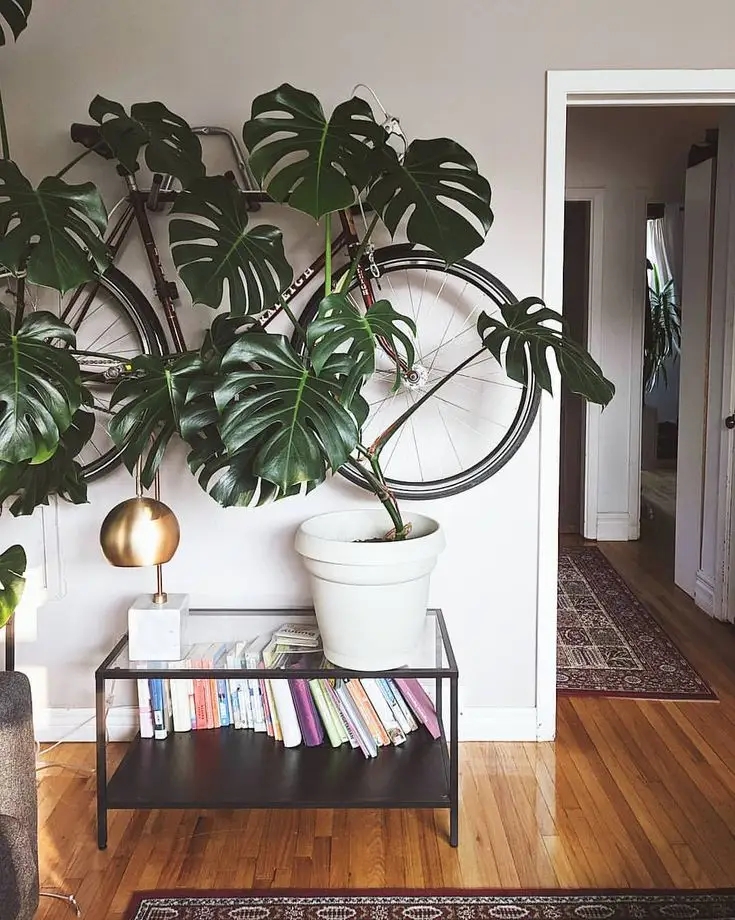

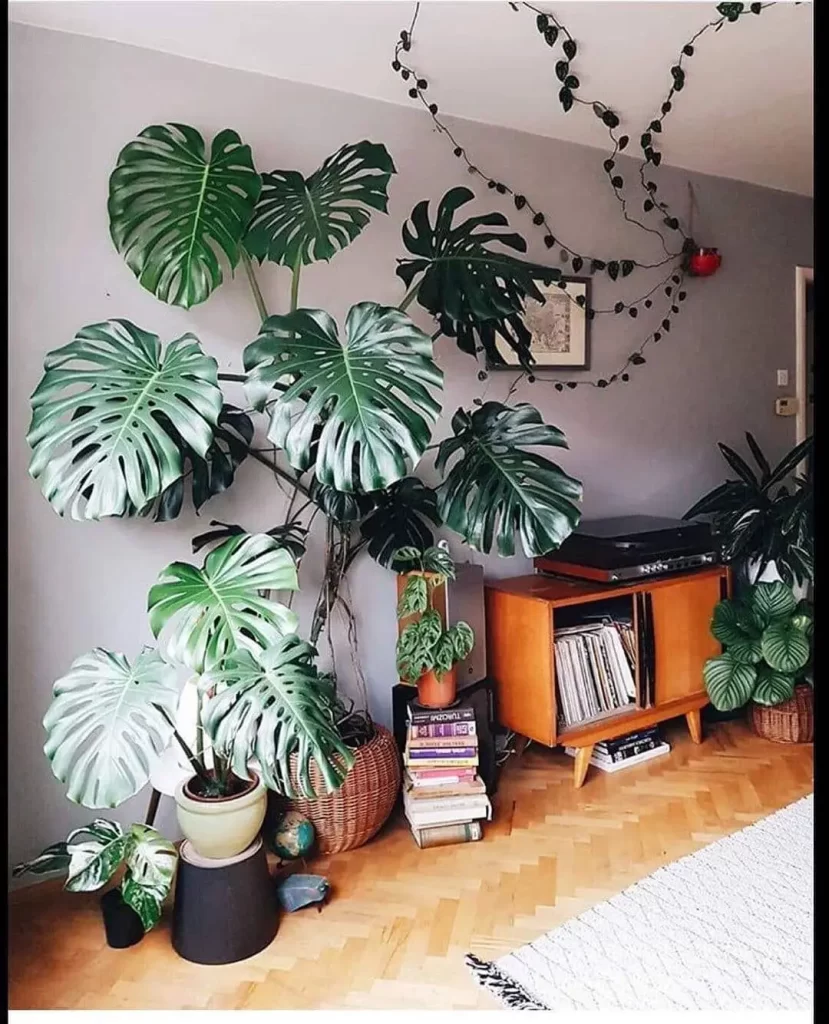
Final Thoughts
Embracing the Monstera plant in your home is like inviting a piece of the tropics into your daily life. Its iconic, perforated leaves not only serve as a visual centerpiece but also contribute to a serene and healthful environment. Beyond its aesthetic allure, the Monstera acts as a natural air purifier, enhancing indoor air quality and promoting well-being. Its relatively low-maintenance nature makes it an ideal companion for both novice and seasoned plant enthusiasts. By dedicating attention to its care—monitoring light exposure, watering routines, and humidity levels—you ensure that your Monstera thrives, rewarding you with lush growth and a vibrant presence. Incorporating this remarkable plant into your space not only elevates your décor but also fosters a deeper connection with nature, enriching your living environment in multifaceted ways.
